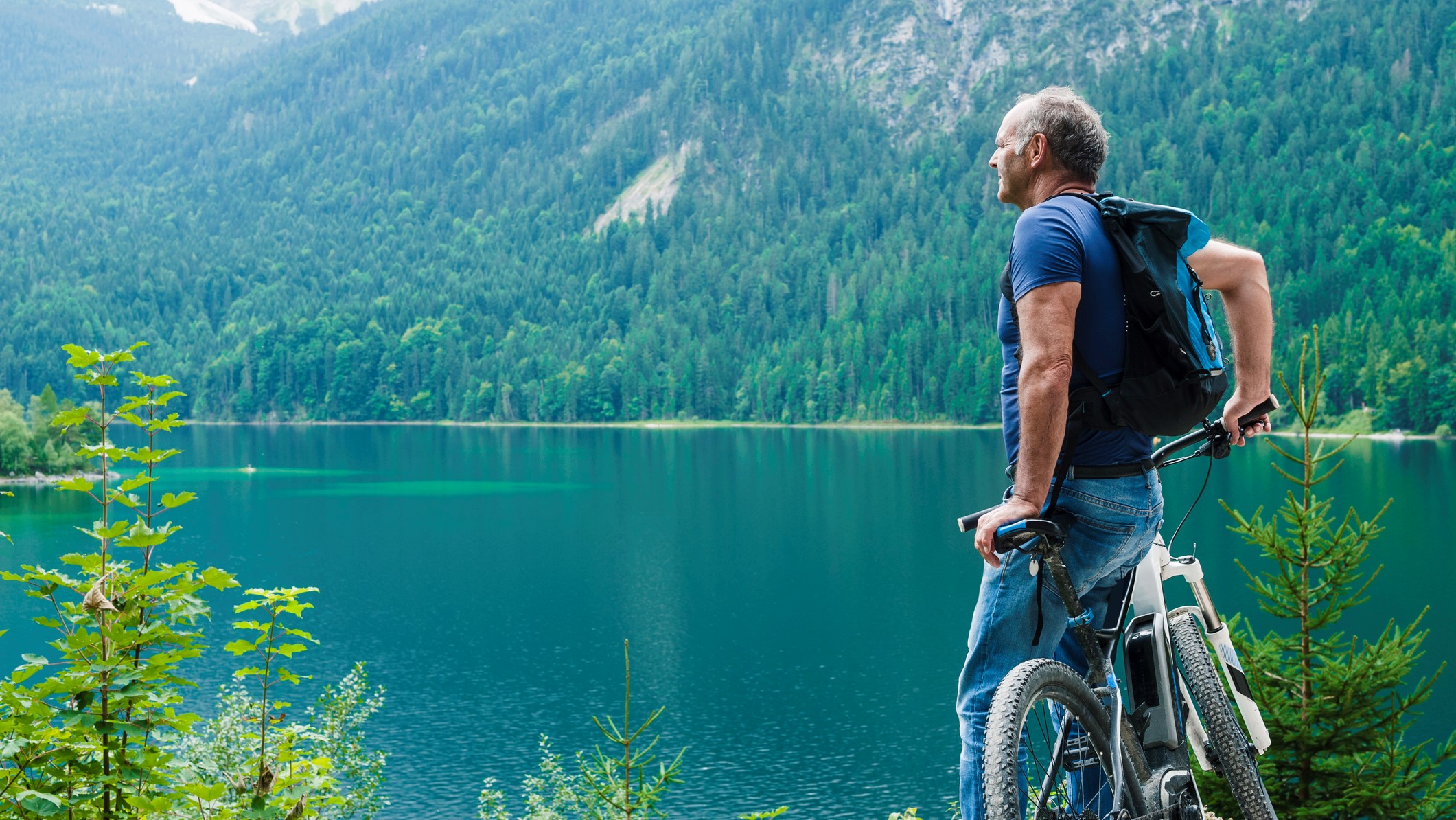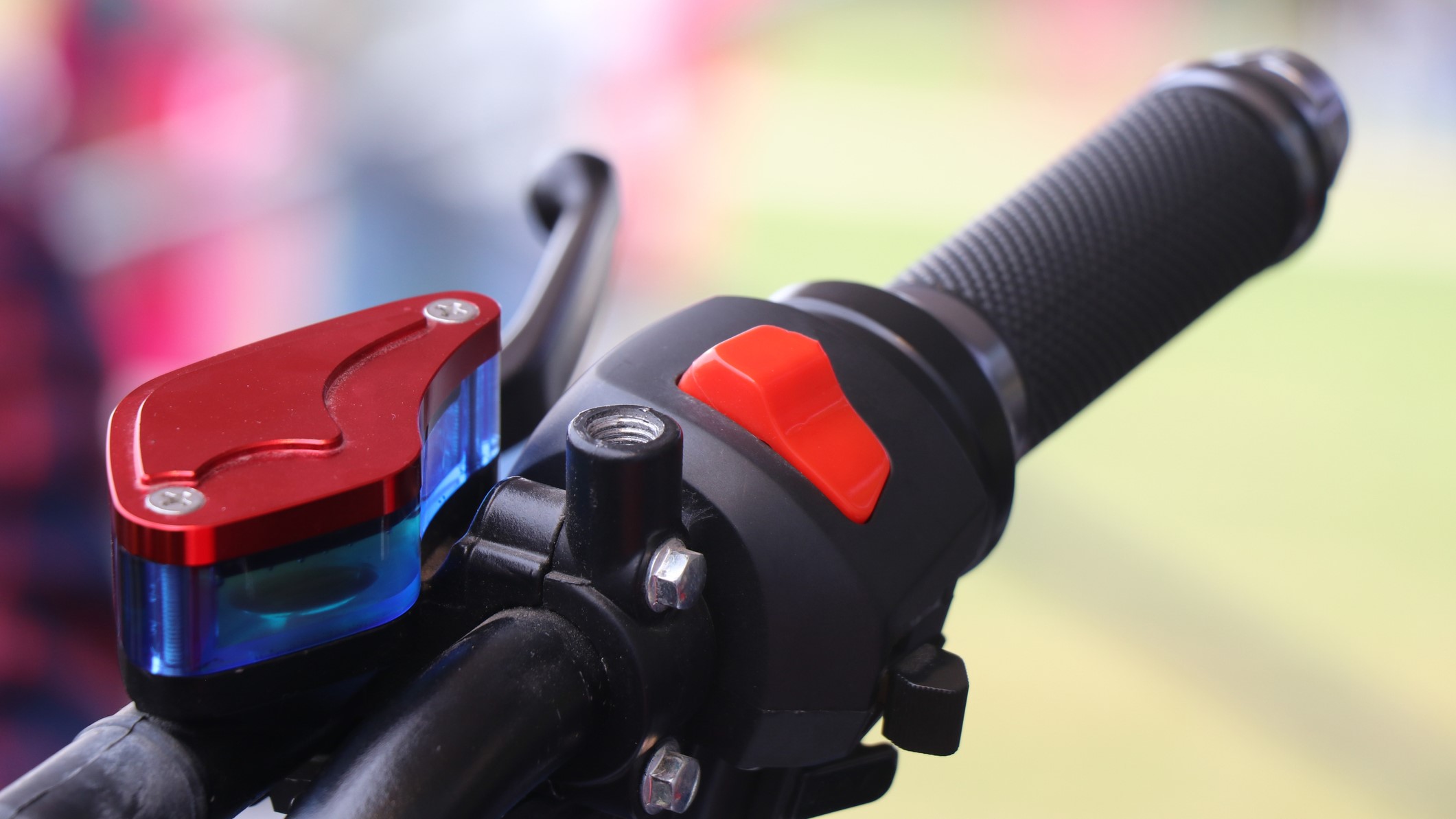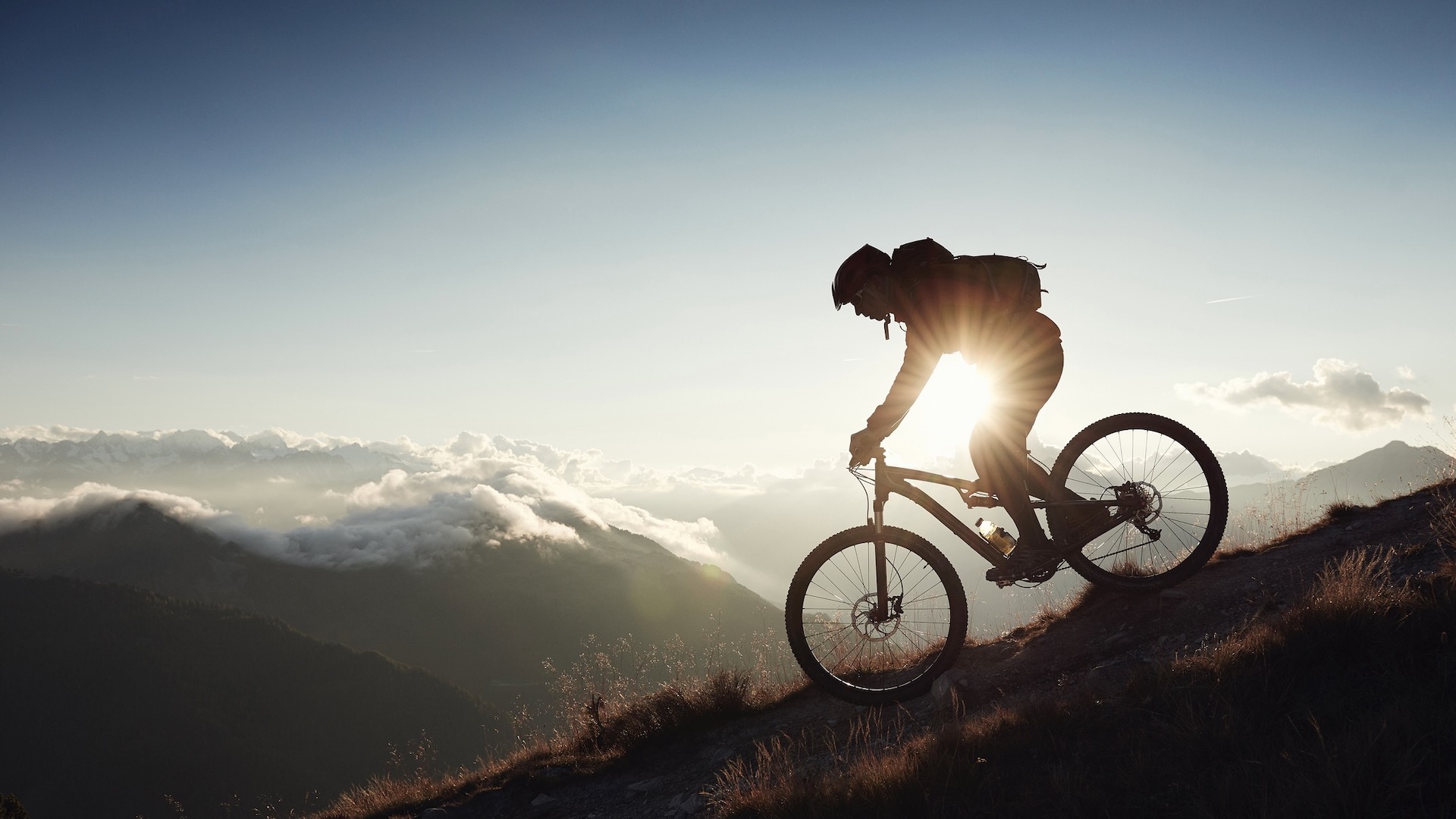What is e-biking, and is it right for you?
We take a look at the different types of e-bike on the market today, the advantages of e-bikes, and the downsides of getting that assisted boost

One of my favorite local bike rides in Vail, CO is the nine-mile ride up Vail Pass. I must have ridden it hundreds of times over a dozen years there. Unlike other nearby road biking spots, there are no cars on this former highwayer-turned-rec-path. It begins in East Vail at an elevation of 8,772 feet and follows the new highway as it climbs to 10,603 feet where you’re treated to sweeping views of the Gore Range. With practice, it gets easier and over the years I got fit enough that there were only two parts where I had to stand up on my pedals to get going, but overall it’s always a good, tough challenge. That’s why I remember being affronted the first time an old guy whizzed past me on an e-bike.
Over the last seven years or so, the experience of being overtaken by an aged biker on a softly whirring bike on a steep hill became commonplace, as did the bone of contention between traditional bikers and e-bikers in Colorado. Traditional bikers, who have dedicated countless hours to becoming fit enough to tackle the grueling climbs of the Rockies, think e-bikers are cheating. E-bikers argue that it breaks down the barriers that deter them from riding a standard bicycle in the first place. I definitely fell into the snobby traditionalist camp, until I got chatting to one of my yoga students about it.

Jorge was 64 years-old at the time and had been visiting Vail from Mexico a few times a year for half his life. The steep local climbs combined with the high altitude environment had previously meant that most cycle rides were off-limits to him. Now, he and his wife could reasonably get out and enjoy one of the best activities – and with it, lots of the best views – that Colorado has to offer. Who was I to say that he shouldn't be allowed to enjoy the same things as I do?
Regardless of where I, or you, stand on this debate, one thing seems sure: e-biking is here to stay. E-bikes are on our trails, those of us who live in cities have grown immune to Deliveroo cyclists whizzing down city streets as they do their part to ensure no one waits more than 30 minutes for a takeaway, and market research shows that global e-bike market size was valued at nearly $19 billion in 2022.
So what is e-biking anyway? In this article, we take a look at the different types of e-bike on the market today, the advantages of e-bikes and the downsides of getting that assisted boost.

What is an e-bike?
An e-bike is an electric bike that usually comes equipped with a small, battery-powered motor that assists the pedals. There are three types of e-bike available today:
- Class 1: only provides assistance when you are pedaling and ceases when you reach 20 mph.
- Class 2: provides assistance regardless of whether you are pedaling or not, and ceases when you reach 20 mph.
- Class 3: only provides assistance when you are pedaling and ceases when you reach 28 mph.
Not all classes of e-bikes are allowed in all states or countries, and are often subject to similar rules to motorized vehicles such as cars and restricted to roads. Some e-bikes come with a throttle, usually on the handle bars, that you can twist or push to give you a boost without the need to pedal. Further, you can find e-bikes built for all types of cycling: commuter, road, mountain, beach cruising, gravel, you name it.
All the latest inspiration, tips and guides to help you plan your next Advnture!
E-bikes don’t take out all the work of cycling, but they do reduce the amount of work you have to do when you’re pedaling uphill or on a bikepacking trip and hauling gear. You can turn off the motor and ride them like a standard bike when you want to. The battery can be charged by plugging it into a standard power outlet at the wall.
Though regulations differ in different localities, which we’ll get to, generally speaking you don’t need a special license or permit to operate an e-bike.

What are the advantages of e-biking?
According to a 2018 survey of 1,796 e-bike owners in North America by the National Institute of Transportation and Communities, reduced physical exertion tends to be a common reason for users to purchase an e-bike. If you’re a cyclist yourself, you might be screaming at your screen that physical exertion is the whole point of cycling, but of course, it isn't always. E-bikers might be commuting and not want to show up for work sweaty and out of breath. They are often trying to find a more economical and environmentally-friendly means of getting their young kids to school and an e-bike might give them the physical capacity to do so. Parking might be an absolute nightmare where you live, but not something you need to contend with if you have an e-bike. Regardless, as we’ve already stated, e-bikes do mostly still require you to pedal, so they’re not without physical exertion, they just reduce it at times.
Challenging topography was listed as a persuasive argument for e-biking. If you’re a triathlete, you may think your e-biking comrades just need to get fitter, but there are loads of valid physical and medical reasons why someone may not be able to tackle a particular ride – or even part of it. Does this mean that they should be excluded from biking or relegated to the shame of pushing their bike up the steep parts? Of course not.

Cutting down on car usage is another popular reason for e-biking, and it’s hard to argue with that. E-bikes run on a battery, so they have zero emissions. Though one might set you back a couple of grand, they’re cheaper than most cars which makes them more accessible to people of lower incomes, and we can all agree that fewer cars on the roads is a good thing for everyone. And yes, people could switch to using a standard bike, and save even more money, but if the topography where they live prevents them from doing so, would you rather they drive a car just to spare your ego or hum past you on an e-bike?
Another deterrent for people using a standard bike is trip distance and time. Often, people would rather drive if the trip is going to eat up a huge chunk of their day or use all of their energy, but an e-bike may feel like a good compromise. You’ve also got the fact that an e-bike could help you outrun a pack of wolves – handy if you live in Canada, Alaska, Wyoming or Idaho, though you'll want to make sure you have a Class 3 bike to go fast enough.

What are the downsides of e-bikes?
So far, it’s looking like e-bikes get more people moving and more cars off the roads without adding to fuel emissions to the environment, but there are some disadvantages too. First of all, you can’t ride all e-bikes everywhere. The rules vary from country to country, and even between counties, and there is still ongoing debate about whether e-bikes should be classified as motorized vehicles or not. However, in the US, you should know that e-bikes are classified as motorized vehicles on BLM land and National Forest land, which means if you’re hoping to get out on the trails, your access to the outdoors may be limited.
Next up, just like your GPS watch, iPhone and perhaps even your running headlamp, your e-bike needs to be charged, and that means it can run out of battery. But can’t you just pedal if the battery dies? Well, yes, of course you can, but you should know that e-bikes are heavier than standard bikes, by a large margin. The Marin Alpine Trail E2 mountain e-bike tips the scales at 56 lbs (25 kg) and you can expect about 30 - 40 miles of trail riding out of one charge. After that, you’re pushing your weight plus the equivalent of a small bale of hay up a mountain. According to our friends at Cycling Weekly, you can expect anywhere from 25 - 70 miles of ride time on a single charge, but of course you don't need assist for the downhills. Some e-bikes, such as the Marin, do come with detachable batteries which makes them lighter if you have somewhere you can stash it for later.
According to the NITC survey, another complaint among e-bike owners pertained to upkeep and maintenance issues, with changing the tube in the tire and finding shops to help with servicing and electronic systems listed as frequent problems (though the way sales are going, it’s hard to believe the latter problem will persist). Some users have experienced problems with batteries becoming damaged, which can cause them to overheat or even catch fire.

Is e-biking for you?
It seems pretty clear that there are lots of great arguments for e-biking, especially in a commuter environment where an e-bike might be the difference between a car ride or a totally green option. Further, for those of us with physical or medical obstacles to taking part in some recreational cycling, e-bikes can break down a lot of barriers and allow us to enjoy green exercise, and as far as we’re concerned, that’s a huge bonus. But if you’re a keen mountain biker or road cyclist already, and don’t have any physical limitations, we can’t really see a good argument for adding the weight and complication of a motor. Finally, if you’re a Deliveroo biker, please get off the sidewalks.
Julia Clarke is a staff writer for Advnture.com and the author of the book Restorative Yoga for Beginners. She loves to explore mountains on foot, bike, skis and belay and then recover on the the yoga mat. Julia graduated with a degree in journalism in 2004 and spent eight years working as a radio presenter in Kansas City, Vermont, Boston and New York City before discovering the joys of the Rocky Mountains. She then detoured west to Colorado and enjoyed 11 years teaching yoga in Vail before returning to her hometown of Glasgow, Scotland in 2020 to focus on family and writing.

